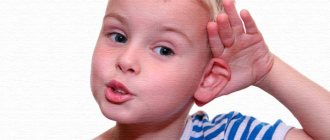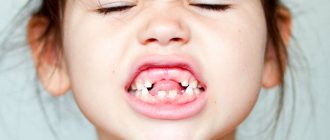Causes and risk factors
Classification of a pathological condition involves division into organic and functional. The disorder may be a consequence of central nervous system dysfunction and hearing impairment. Also, its occurrence is caused by injuries and bruises of the head, damage to the speech organs. This could be a brain tumor, stroke, thrombosis. In older people, there is a connection with Alzheimer's and Parkinson's diseases. In this case, pathological memory disorders and mental disorders occur in parallel. Less commonly, epilepsy, alcohol abuse, cerebral palsy, and infectious diseases of the brain contribute to dysfunction.
The functional causes of speech disorder are considered to be external factors, for example, stress, fear, hysteria, untreated pathology from childhood. Under the influence of taking certain medications (antidepressants, tranquilizers), auditory perception may decrease, which aggravates speech disorders. An important role is played by the hereditary factor. If there is a predisposition, it is necessary to monitor the person’s condition over time.
The simultaneous influence of external and internal causes is possible, in which case the picture of disorders becomes multi-layered and manifests itself in a large number of symptoms.
A person’s communication functions also suffer when dentures are installed incorrectly. A deep state of stress and overexertion can lead to spastic dysphonia. In this case, tension in the voice or its disappearance is noted.
Rules for correcting speech
Speech impairment appears not only due to pathology of the articulatory apparatus, neurological pathology and the habit of incorrect pronunciation. Another factor is psychological. When excited, a person’s speech becomes barely audible and almost incomprehensible.
The work of a speech therapist to restore speech is based on the following principles:
- Personal orientation.
- Creating an emotionally favorable environment.
- Interaction with parents.
- Positive motivation.
Speech therapy classes involve improving the mobility of the articulatory apparatus. We are also working on sounds and restoring phonemic hearing. Specialists work with children in a playful way, using speech games and a computer. Combined activities are carried out that involve switching attention from one activity to another.
Classification of disorders in adults
Similar to childhood dysfunctions, pathology is divided into types according to its manifestations and symptoms. Experts identify the following expressive speech disorders:
- aphasia;
- alalia;
- bradyllalia;
- dysarthria;
- dysorthography, dysgraphia;
- dyslexia, dyslalia;
- stuttering;
- delayed speech development, or SRD.
The characteristics of aphasia are the same as in childhood. Speech impairment is caused by damage to various parts of the brain. Depending on the location of the pathological process, various symptoms come to the fore. Each type of aphasia has common and individual characteristics. To one degree or another, writing and reading impairments always appear. If pathological changes are associated with age-related changes, already formed speech skills disappear.
Speech disorders: classification and types
Speaking about the general classification of existing types of speech disorders, we can highlight the following:
1- Dysarthria:
These are pronunciation disorders caused by damage to the muscles of the speech apparatus.
2- Dyslalia:
Dyslalia is a sound pronunciation disorder characterized by the absence, substitution, confusion, or distortion of phonemes and sounds in spoken speech. There are several types of dyslalia:
- Physiological dyslalia: children often pronounce sounds incorrectly - this is due to the insufficient development of speech organs in childhood. This is absolutely normal and should not alarm parents - unless the problem does not go away on its own over time.
- Audiogenic dyslalia: As the name suggests, this disorder involves a child's hearing impairment that prevents them from correctly recognizing, imitating, and producing sounds. It is logical that if a person has difficulty hearing, he will also have difficulty speaking.
- Functional dyslalia: long-term physiological dyslalia, which has already been preserved when the speech apparatus has been formed, can develop into functional dyslalia. With this type of dyslalia, the structure of the organs is not disturbed, but the child mixes, distorts or replaces sounds.
- Organic or mechanical dyslalia: This type of dyslalia is also called dysglosia. They are associated with structural defects of the speech organs. Let's take a closer look.
3- Dysglossia
Dysglosia (not to be confused with diglossia or a variant of bilingualism) is a speech disorder, as we mentioned above, associated with defects (clefts) of the organs involved in speech. The following subspecies are distinguished:
- Lip dysglosia: associated with changes in the shape of the lips, cleft lips. The most well-known pathologies of this type are cleft lip and cleft palate.
- Dysglossia of the jaw: caused by irregularities in the shape, clefts of the upper, lower or both jaws.
- Dental dysglosia: speech disorder due to gaps between teeth or misalignment of teeth.
- Tongue dysglossia: Caused by clefts and other defects of the tongue. Pathologies that may be the causes of these disorders are ankyloglossia (short frenulum of the tongue), macroglossia (abnormally large tongue), and unilateral or bilateral paralysis.
- Nasal dysglossia : associated with pathologies that do not allow air to enter the lungs correctly.
- Palatal dysglossia: caused by cleft palates.
4- Dysphemia
Dysphemias are speech disorders characterized by impaired articulation with repeated interruptions and repetitions caused by poor ideomotor brain coordination. An example of dysphemia is stuttering.
5- Aphasia
This type of speech disorder can manifest itself at any age, since it is associated with local damage to the parts of the brain involved in speech and represents the absence or impairment of already formed speech.
- Broca's aphasia: Broca's aphasia or efferent motor aphasia is caused by damage to the motor speech center or Broca's center and adjacent areas. Characterized by great difficulties with articulation and telegraphic speech (very short phrases). Speech expression suffers the most (hence why it is also called expressive aphasia), while speech understanding is preserved or suffers less.
- Wernicke's aphasia or sensory aphasia: a speech disorder caused by damage to the left temporal lobe, adjacent to the auditory cortex. It is characterized by fluent but uninformative (paragrammatic) speech, impaired phonemic hearing, and problems distinguishing the sound composition of words. Sufferers of this disorder also have difficulty understanding speech.
- Conduction or conduction aphasia: This type of motor aphasia is caused by damage to the arcuate fasciculus and/or other connections of the temporal and frontal lobes. The disorder is characterized by an impairment in the ability to repeat words and sentences, while maintaining understanding and fairly fluent spontaneous speech. Conductive aphasia often causes problems with reading, writing, and remembering names.
- Transcortical sensory aphasia: This type of language disorder is caused by damage to the connections between the parietal and temporal lobes and is associated with impaired comprehension of single words, although repetition ability is relatively intact. Transcortical motor aphasia: This language disorder is caused by subcortical lesions in areas below the motor cortex and is associated with impairments in spontaneous speech, but memory for names is not affected. Anomic aphasia: associated with lesions in various areas of the temporal and parietal lobes and is characterized by disturbances in the pronunciation of individual words. Global or total aphasia: complete loss of the ability to speak and understand speech. All language functions are impaired.
6- Dyslexia
Dyslexia is a learning disorder in reading and writing that is associated with a neurodevelopmental disorder. Currently, there are professional tools for neuropsychological testing of dyslexia, for the correction of dyslexia at school, as well as games for cognitive training of children with dyslexia.
7- Specific speech disorder
Specific language or language development disorder is a delay in the learning and use of language or the inability to use it in the absence of brain damage, normal mental development, adequate sensory development and the absence of psychopathology. Often children with a specific language disorder also show signs of dyslalia and the other disorders mentioned above.
8- ADHD or Attention Deficit Hyperactivity Disorder
ADHD is associated with language impairment and also causes learning and communication problems. Research shows that children with ADHD experience difficulties with syntax and phonological organization of speech. They also have problems with semantic organization and auditory memory. Currently, tools have been developed for neuropsychological testing of ADHD, neuroeducational programs to address learning difficulties in school, and games for cognitive stimulation of children with ADHD.
9- Dyscalculia
Despite the fact that this disorder does not affect speech (as much as others), in this case the understanding of another language - mathematical - suffers. Dyscalculia affects the ability to work with numbers and understand mathematical terms. People suffering from dyscalculia do not understand the logic of the mathematical process. Currently, there are professional instruments for neuropsychological testing of dyscalculia and games for cognitive stimulation of children with dyscalculia.
Forms of speech impairment
| Name of disorder | Main symptoms |
| Acoustic-mnestic aphasia | Speech is confused and slurred. Pauses between phrases. |
| Efferent-motor form of aphasia | There is a displacement of phonemes and a violation of articulation. |
| Alalia | Verbal communication is almost impossible. The vocabulary is insufficient, division into syllables is difficult. |
| Bradylalia | Slowing down the rate of speech is also reflected in writing and reading. Characterized by monotony. |
| Dysarthria | Complex disorders affect motor skills, breathing, timbre and strength of the voice. |
| Dysorphography | The patient makes mistakes when writing, but they are not associated with awareness of the rules of writing or pronunciation. |
| Dysgraphia | Partial spelling disorders due to insufficient control of written speech. |
| Dyslexia | Loss of reading skills, the patient has difficulty mastering the material read. |
| Dislalia | Against the background of normal hearing and correct articulation, a violation of the pronunciation of sounds is noted. A dentist is hired for diagnosis. |
| ZRR | More often found in childhood: a poor vocabulary, monotonous speech without intonation. |
| Stuttering | The tempo is interrupted cyclically when certain sounds are repeated. |
How to treat and what will happen if you don’t treat
First, the clinic’s specialists diagnose the degree of the disorder and determine what the problem is, and then carry out speech therapy work: they do finger, articulation and breathing exercises so that speech is synchronized with breathing, correct and reinforce the correct pronunciation of sounds, and work on the expressiveness of speech.
Just as with aphasia, it is important to start correcting dysarthria as early as possible. Speech defects become habitual, so the later you go to the clinic, the more difficult and longer it will be to restore articulation, and this is not an easy process - remember adults who have had a lisp since childhood or cannot pronounce the letter “r”.
Establishing diagnosis
Diagnosis of speech disorders in adults is carried out using MRI of the brain and blood vessels, examination by a speech therapist and speech pathologist, neurologist, ENT doctor. An integrated approach allows for accurate differentiation and development of a treatment plan.
In a child, pronunciation defects are often formed in the perinatal period, in an adult - after a stroke, uncontrolled use of medications or irreversible degenerative processes in the brain. Therefore, when complaining of a sudden speech disorder, a person is always sent for a thorough examination.
In case of incorrect bite formation in children and impaired tooth growth, an orthodontist consultation is required. Speech correction begins with eliminating the cause of the deviation.
Principles of treatment
If slurred speech is detected, what to do? It is necessary to treat the main disease that caused the disorder:
- Tumors are removed surgically.
- Resection of the hematoma if it is on the surface.
- Surgical removal of ulcers in the skull followed by the administration of antibacterial agents.
- Normalization of pressure.
- Using drugs to restore metabolism and cerebral blood flow.
People with various disorders need to visit a speech therapist so that the deficiency can be corrected with the help of special exercises. Regular classes are required.
Symptoms and signs
Speech impairment consists of any manifestations of deviations from the norm. This is an incorrect tempo, a change in sound type, insufficient vocabulary, etc. They can be chronic or occur suddenly. A characteristic difference between childhood disorders and adults is that the cause of the latter is often an organic disease. Common accompanying symptoms: increased salivation, stuttering, lack of facial expressions, unclear phrases, etc.
When several signs of the disease appear, speech becomes difficult for others to understand. In case of sudden speech disturbances, it is necessary, first of all, to exclude the development of a stroke.
Speech disorders: how to help your child at home
As we have already learned, there are no definite and clear symptoms of speech disorders, since they are very diverse, of varying degrees of severity and bring various problems to the people who suffer from them. Below we will give some general tips that you can use at home if your child has a speech disorder.
Since we are primarily talking about communication problems, try to communicate with your child as much as possible . Listen to music together, sing, listen to him and definitely don't interrupt him, give him time to say what he wants, be patient.
Reading is also very useful, and it is better to read in an interactive form. Discussing what you read, drawings, coming up with different endings to a book - all this is very useful for the development of speech.
And finally, the most important step is to identify what exactly the child’s problem is and then contact the appropriate specialist.
For more specific diseases such as dyslexia, dyscalculia, ADHD, specific speech disorder, a different, more in-depth intervention is required. Which one exactly - you can find the answer by following the links provided above.
Treatment methods
The choice of treatment regimen determines the underlying disease, as well as the age of the patient. If speech impairment is caused by an acute condition, such as a stroke, the patient needs emergency medical care. The sooner rehabilitation begins, the higher his chances of living a full life in the future. Treatment consists of speech therapy tasks, physiotherapeutic methods, massage and medication. Plastic surgery of the maxillofacial region and special gymnastics and psychotherapy sessions may be required. In case of spasmodic dysphonia, the spasm is relieved with Botox injections directly into the vocal cords.
Throughout the entire course of treatment, you need to avoid external irritants, and if possible, do not leave the sick person alone in unfamiliar places. For problems with the vocal cords, a gentle regimen is recommended so as not to strain them. Also, some medications and foods can cause spasms, for example, coffee.
Each type of communication disorder requires a special approach in accordance with its manifestations. So, with dysarthria, it is better to communicate with a person in writing and using gestures. Oral speech should be as simple and slow as possible.
At home, you can continue corrective work to eliminate speech defects with the help of exercises prescribed by your doctor. It is necessary to give preference to communicating with interlocutors rather than watching TV.
Causes of slurred speech
Dysarthria
The term “dysarthria” itself is translated as “disorder of articulate pronunciation.” Slurred speech is observed in most types of dysarthric disorders: pseudobulbar, bulbar, extrapyramidal, cerebellar dysarthria. The cause of speech motor disorder is damage to the cranial nerves innervating the articulatory apparatus. Dysarthria can develop with the following nosologies:
- cerebral palsy;
- Parkinson's disease;
- strokes;
- traumatic brain injuries;
- neuroinfections;
- brain tumors;
- hepatic encephalopathy, etc.
Due to imprecise articulation and poor intelligibility for others, the oral speech of a dysarthric person is characterized by the metaphor “porridge in the mouth.” The pronunciation of almost all groups of sounds is significantly distorted: both vowels and consonants. Due to hypersalivation, characteristic squelching sounds appear, reducing the intelligibility of pronunciation.
Along with phonetics, speech prosody suffers. The voice is weak, fading, intermittent, hoarse with a nasal tint. Speech is monotonous, slow, there is no intonation expressiveness and emotional coloring of the statement. Breathing is shallow, arrhythmic, speech exhalation is weakened. All this makes the speech utterance poorly understood.
The quality of speech production deteriorates in proportion to the severity and prevalence of paresis and paralysis of the oral, vocal, and respiratory muscles. Taking into account the degree of innervation insufficiency, slurred speech can vary from mild “blurredness” with erased dysarthria to inarticulate speech and even its complete absence - anarthria - in severe forms.
Rhinolalia
With open rhinolalia, oral speech is extremely slurred. This is due to the total distortion of the sound image of the word. The lips practically do not participate in articulation, the tongue is pulled deeper into the oral cavity, the tip of the tongue cannot make a full connection with the incisors and alveoli. Snoring, clicking, hissing, whistling noises are mixed with the sounds of speech.
At the moment of phonation, excessive tension of the facial muscles is noted. The voice is muffled, unmodulated. Due to air leakage through the nose, hypernasality occurs. Pronunciation becomes slurred and unintelligible.
Dislocation of the lower jaw
With an anterior TMJ dislocation, the patient's mouth is slightly open and the chin is pushed forward. Attempts to close the jaws are sharply painful. There is drooling. The patient's speech is difficult or impossible, which is why he tries to communicate using gestures.
With a posterior dislocation of the lower jaw, on the contrary, mouth opening is limited. The chin moves posteriorly, the tongue moves deeper into the mouth, and there is no contact between the opposing teeth. Due to the inability to move the jaws, slurred speech is noted.
Edentia
Articulation disorders can be caused by the absence of several or all teeth. First of all, the clarity of pronunciation of front-lingual sounds is impaired. With edentia, speech becomes lisping and slurred. Diction suffers most severely in the absence of teeth on both jaws.
Edentia
Condition after dentures
Defects and unclear speech can be observed in dental patients at the stage of adaptation to dentures: bridges, removable, implant-supported. Normally, this time period takes from 10 to 30 days, its individual duration correlates with the physiological and psychological characteristics of the patient, and the quality of the manufactured orthopedic structures.
The adaptation stage is characterized by a feeling of the prosthesis as a foreign body, increased salivation, decreased chewing efficiency, gagging, and tension in the articulatory muscles. There are disturbances in diction, additional overtones (smacking, whistling), general slurring and unintelligibility of speech.
Hearing loss
Severe speech disorders affect congenitally deaf and early deafened patients. With hearing loss, both the understanding of speech and its pronunciation are impaired. The structure of the word is distorted due to the loss of sounds and entire syllables, approximate articulation, and the impossibility of auditory control. Slurred speech is expressed in its monotony, deafness, understatement of words, and a large number of ungrammatisms.
Peritonsillar abscess
Patients with phlegmonous tonsillitis in the abscess stage complain of fever, excruciating pain when swallowing saliva, taking water and food, difficulty opening the mouth, and drooling. The inflammatory tumor spreads to the soft palate, palatine arches and uvula, as a result of which the mobility of the articulatory organs is impaired. Due to severe swelling in the oral cavity and lockjaw, speech becomes slurred and the voice becomes nasal. All symptoms gradually regress after opening the abscess.
Alcohol intoxication
Inarticulateness and slurred speech are typical for persons under the influence of alcohol. With a mild degree of intoxication, the semantic side of the statement is more disrupted - speech becomes meaningless, primitive, and confusing.
With severe alcohol intoxication, the articulation of labial and anterior lingual sounds becomes difficult. A person distorts words, places stress incorrectly, “swallows” sounds and syllables. The pace of speech slows down, hesitations and repetitions of words appear. Slurred speech disappears as you sober up.
Prevention
It is impossible to say with 100% certainty that there are certain ways to prevent pronunciation problems. If you have risk factors, you should undergo regular examination at a medical facility. The specificity of defects in the articulatory apparatus does not make it possible to make a forecast for the future. If you have vascular problems, you need to control your blood pressure and lead a healthy lifestyle. Remember that sitting in front of a computer monitor will not get rid of the problem. You need to communicate more with friends and family, take walks in the fresh air.
Speech impairment in adults is not a death sentence; a large role is played by its early diagnosis and an integrated approach to therapy. Treatment should not be symptomatic, but aimed at eliminating or suppressing the cause. Of course, some age-related changes are irreversible. So, with senile dementia, the dynamics will only worsen over time. However, through drug treatment, doctors are able to slow down the development of the disease and the transition to the terminal stage. Do not forget that great importance is given to the patient’s mental state. A positive attitude will help and give confidence not only to him, but also to his relatives.
How to maintain a healthy voice and normal speech
Here are some simple tips to help keep your voice healthy and strong for years to come.
- Reading aloud keeps your voice active. Do you like to start your day with a newspaper? Read aloud for 10-15 minutes every morning. It doesn’t matter to whom - your spouse, neighbor, pet or just yourself. This is a great way to train your voice daily.
- The voice is a reflection of our health. He will be fine when the whole body is in good shape. So be sure to stay physically active. Even something as simple as walking will improve your fitness and maintain your voice.
- The larynx should remain moist and elastic, so drink six to eight glasses of clean water a day. Limit caffeine and alcohol, which dry out your throat. Include grapes, melons, cucumbers and other vegetables and fruits that contain a lot of water in your diet. Use a humidifier, especially during the heating season, the recommended humidity is 30%. And, of course, don't smoke!
- The more you use your voice, the stronger it becomes. Be sociable and participate in the conversation. The worst thing you can do is isolate yourself and remain silent. But avoid shouting and loud singing.
Age-related voice problems can begin as early as 50 years of age. But even if there are no changes yet, use these tips. Just as physical training programs help keep your body strong, working on your voice will help keep it healthy.
Rules for speech formation
Classes with a specialist allow children to develop literate, phonetically clear speech. But such events will not be enough. The speech therapist only helps with sound production. Everything else depends on the child and parents.
In order for speech to be successfully formed, the following rules must be observed:
- You should not scold your child for slurred speech, you just need to carefully correct it.
- Simple exercises should be shown.
- There is no need to focus on mistakes or stumbles.
- It is necessary to have a positive attitude towards classes with a speech therapist.
- Parents also need to watch their speech.
Prognosis and prevention
Speech disorders can be corrected if this work is started at an early age or early stage. The people around us and the efforts of the person himself play an important role in improving the condition. If the disorder is identified in a timely manner and treatment is started, speech can be normalized. Such children continue to study in regular schools and get along well with the kids.
In complex forms of the disease, achieving improved speech is not easy. You can only correct your speech function. In such situations, the range of measures is broader, and the patient needs to visit a specialized institution. It is necessary to maintain the continuity of speech therapy organizations: go to special kindergartens, correctional schools. It is also important to be treated in psychoneurological hospitals if it was prescribed by a doctor.
Prevention involves implementing effective measures from birth. The child must be protected from neutroinfection, skull and brain injuries. It should not be affected by toxic factors.
It must be taken into account that success comes with a systematic approach and comprehensive organization of events. Along with traditional treatment, unconventional methods should not be forgotten. It is important to carry out physical activity activities. Using a variety of methods can provide excellent results if used correctly.







